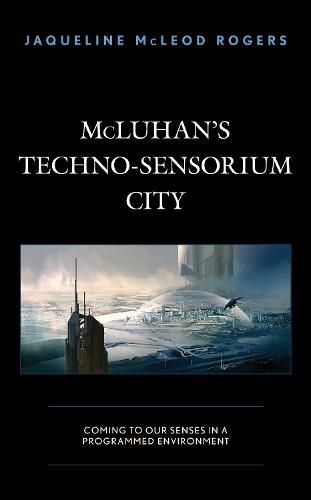Readings Newsletter
Become a Readings Member to make your shopping experience even easier.
Sign in or sign up for free!
You’re not far away from qualifying for FREE standard shipping within Australia
You’ve qualified for FREE standard shipping within Australia
The cart is loading…






In McLuhan’s Techno-Sensorium City: Coming to Our Senses in a Programmed Environment, Jaqueline McLeod Rogers argues that Marshall McLuhan was both an activist and a speculative urbanist who drew from cross-disciplinary and ahistorical sources to explore constitutive exchanges between humanity and technologies to alter human perception and imagine a sustainable future based on collective participation in a responsive urban environment. This environment-a techno-sensorium-would endeavor to design and program technology to be favorable to life and capable of engaging with multiple senses. McLeod Rogers examines McLuhan’s active engagement with the vibrant art and urban design culture of his day to further understand the ways in which the links he drew between media, technology, space, architecture, art, and cities continue to inform current urban and art criticism and practices. Scholars of media studies, urbanism, philosophy, architecture, and sociology will find this book particularly useful.
$9.00 standard shipping within Australia
FREE standard shipping within Australia for orders over $100.00
Express & International shipping calculated at checkout
In McLuhan’s Techno-Sensorium City: Coming to Our Senses in a Programmed Environment, Jaqueline McLeod Rogers argues that Marshall McLuhan was both an activist and a speculative urbanist who drew from cross-disciplinary and ahistorical sources to explore constitutive exchanges between humanity and technologies to alter human perception and imagine a sustainable future based on collective participation in a responsive urban environment. This environment-a techno-sensorium-would endeavor to design and program technology to be favorable to life and capable of engaging with multiple senses. McLeod Rogers examines McLuhan’s active engagement with the vibrant art and urban design culture of his day to further understand the ways in which the links he drew between media, technology, space, architecture, art, and cities continue to inform current urban and art criticism and practices. Scholars of media studies, urbanism, philosophy, architecture, and sociology will find this book particularly useful.